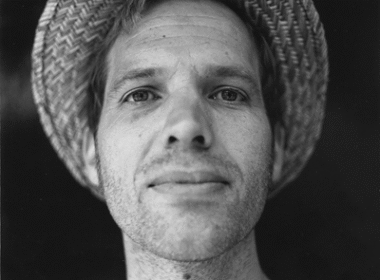
How to seal the deal: Some selling tips every professional artist must know


For artists, it seems like all their lives are spent creating. When they are not making art, they have to market and sell it. And what is selling, if not an art itself?!
You must have caught yourself asking the same question as many other artists, how should I sell my art? What skills do I need for it? Is there a course that I can take? The answer is not that simple, and it cannot be summed up in one line. This week, we go into the details of selling art and what can you do to hone your skills.
Marketing and selling go hand in hand, and yet, the art of selling itself is something that needs its own conversation. Sure, you can put up advertisements, do collaborations, create a marketing campaign, but none of that will matter, if the buyer ends up looking at your art and does not consider it worth buying. You have to make the entire process easier for your buyer and make it worth their while.
Things to keep in mind as you put up your art for sale
Stage your art
If you have gone to a modeling set, you will see the workings behind the shoot. An image, that looks quite simple to us, in fact has an entire team behind it. Similar is the case with furniture stores, apartments, etc. People stage the entire scene, to make one element stand out and appealing to the eye.
As an artist, you must use the same strategy and stage a scene for your art. If you are selling the art online, you should not just take a picture of your art and post it. Beautify the entire scene, add props or accessories that complement your art. If you are selling a landscape painting, maybe add some vases, flowers and fruits to make it look pleasing to the eye. Each artwork will need its own accessories, it is up to you to assess how to do move forward with it. You can also photograph your art installed in homes or public spaces, so your buyers can visualize it easily.

Invest time in photography
This point is related to our previous, as it is concerned with photographing your art. You can add all sorts of accessories and details to the frame, but if the picture is not good, it may not grab the viewer’s eye. Invest in a good camera, and learn the art of taking a quality picture. Taking a good picture requires good frame, proper lighting, and an eye for detail. You may have to spend extra time to take pictures that are aesthetically pleasing, but we promise you, it will be totally worth it.

If you have a quality camera, it can be helpful. But the truth is that you don’t necessarily need a good camera as long as you know what you are doing. With an iPhone, and some practice, you can take remarkable images. Get familiar with the picture settings such as ISO and shutter speed. Learning how to control the lighting in your frame, and how to use it to your advantage, can make a difference. If you cannot invest in camera lighting, no worries. Simply move your setup outdoors, as nothing is better than natural lighting! Most importantly, do some practice because it can perfect your skills!
Create an online presence
A website is the main source where your audience will get direct information about you and your art online. While you can post your work on social media platforms such as Facebook and Instagram, a website helps you streamline the entire process of selling art.
Go to your favorite artists’ website and get inspiration there. What color themes have they used? What font looks best? Have they posted all their artwork at one place or have they divided it into categories? What are some other aspects that can make your website user friendly? Keep these questions in mind as you update your own website. It also helps to make your website more personal.
Apart from adding the professional details and your achievements, tell your audience about you. Who you are, what are your ambitions, and what do you like to do in free time – these are the things that will make you a person and not a seller. Such details humanize artists and people feel more passionately about their art in return.
You can also become part of a directory where all your information can easily reach the target audience. Arts to Hearts Project has launched its very own directory that includes female artists, curators, and gallerists from all around the world. By joining ATH directory, more people will be able to access your profile (which will be personalized according to your needs), portfolio, contact information, location details, and direct links to your website and social media!

Add a piece description
Whether you are selling your art online or in a gallery, don’t just put it on display and expect the buyers to seal the deal. A person who buys art does it more than just the picture or the visuals. We have seen it more clearly during the contemporary times that people are as much interested in the background, as they are in what they can actually see. An artwork that has a story behind it will seem more appealing to a buyer because that is what they want as well; a story to tell.
If your piece has a history, a story, or a reason, a buyer will feel moved by it. They will want to add it to their own collection so they have something to tell to their own friends.

Have an email list
If you have a website or an online presence, then you can think about sending out newsletters. A newsletter is an easy way to get to your followers without spending a dime. However, in order for your newsletter to work you will need to spend some time and energy in the beginning. Building an extensive email list is not something that will happen in a day, it will take time, but it will be worth it.
You can get your followers’ email through a number of ways. For example, create a system where anyone visiting your website is asked to submit their email address. When you are selling your art to someone, you can take their email address so you can keep them updated in the future about your newest art collections. You can use pops ups or Facebook ads for this as well. Usually, people have no problem with giving away their emails as it costs nothing, especially if you include a special discount into the mix.
However, when we talk about newsletter, we do not talk about sending plain updates. You have to draw your recipients in with engaging emails and interesting content. Throw in some images of your studio, or behind the scene details, so once the artworks ready, they are the first in line to pay for it!
Selling your art effectively is not one skill but a combination of skills. Marketing your art will get you all the interested buyers, but ultimately your art will be responsible for the make-or-break decision. You must prepare for that in advance. Make your art irresistible to the onlookers, so when they do end up at your front door, they want to take a slice of that experience home with them!

















Comments 15